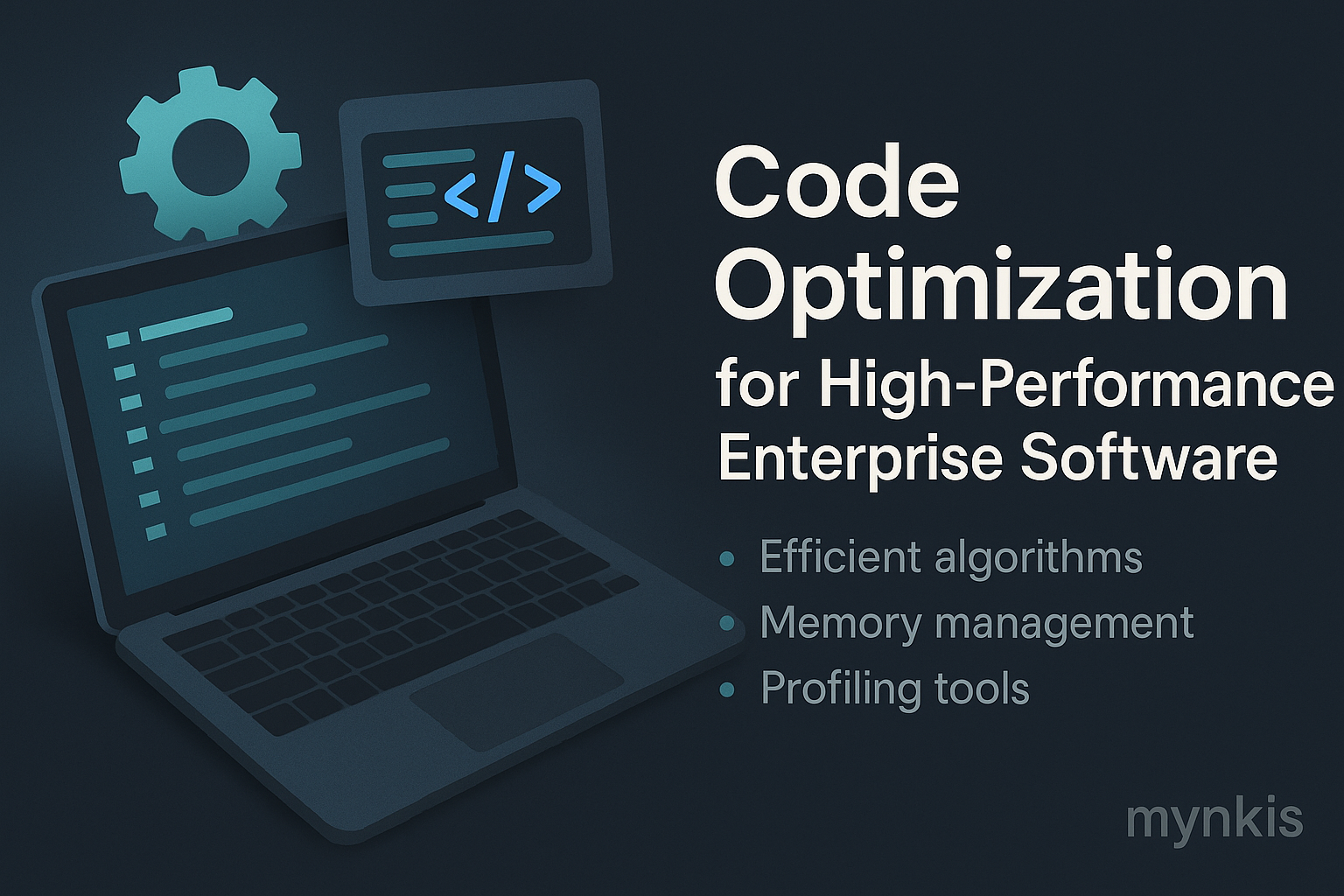Schedule a Demo
In my work with operations managers, I've seen how code optimization can transform an enterprise software solution from sluggish to sleek, significantly impacting business operations. For large organizations, the performance of internal tools and customer portals can't be an afterthought. High-performance software isn't just about shaving milliseconds off execution times; it's about enhancing user experience, reducing load on servers, and optimizing resource utilization.
Algorithmic optimization lies at the heart of code optimization. By choosing or refining algorithms to solve problems in the most efficient manner, companies can dramatically reduce the computational complexity of their software. Take, for example, a database query that might run in O(n^2) time when optimized could potentially function in O(n log n), transforming a half-hour operation into a matter of seconds. This principle guides the structuring of our applications, especially in scenarios with high data volumes.
Let's talk about memory. It's an essential resource, often neglected until it becomes a bottleneck. Efficient memory management can prevent crashes due to memory leaks or simply make your custom software development run smoother. For instance, I worked on a project where optimizing memory use by implementing proper caching strategies reduced server crashes by 60% and shaved hours off nightly report generation processes.
Caching is about smartly leveraging temporary storage to reduce data retrieval times. Whether you're dealing with database queries, API responses, or webpage elements, smart caching can lead to dramatic performance gains. For enterprise systems, utilizing distributed caching systems or even in-memory data grids can bring noticeable improvements, particularly for applications handling frequent read operations.
For global corporations, reducing latency isn't just nice to have; it's critical. Latency can be a silent killer of application performance, particularly for systems reliant on cloud infrastructure. Implementing strategies like compressing data, asynchronous processing, or even choosing data centers wisely can minimize the time it takes for data to travel from point A to point B.
You can't optimize what you don't measure. Profiling tools provide insights into where your custom software development may be lagging, allowing you to identify bottlenecks and resource-intensive processes. In my experience, a thorough profiling session often uncovers surprises—such as a piece of code expected to be efficient hogging CPU cycles, leading to targeted optimizations that boost overall performance.
Writing efficient code starts from the ground up. It's not just about big-picture algorithm changes but paying attention to the small things. Consider this: a well-optimized sorting function can replace iterative searches and radically speed up data handling. Moreover, using the right data structures for the task at hand, such as using hash tables instead of arrays when constant-time lookups are needed, can keep your custom software development humming along at peak efficiency.
Today's hardware comes with multiple cores, often underutilized in software designs. By applying principles of parallel processing, we can execute different code segments concurrently. This isn't just about speed; it's about ensuring your custom software can scale to handle increased loads gracefully, a critical feature for enterprise web solutions.
Code reviews aren't just for catching bugs; they're a critical part of code optimization. Regular reviews can identify potential performance pitfalls before they become system-wide issues. Moreover, they foster a culture of quality and continuous improvement within the development team, aligning everyone towards the goal of high-performance software.
Refactoring isn't just about making code cleaner or more readable; it's an opportunity for code optimization. As you restructure code, you often find optimizations like streamlining loops or eliminating redundant computations. Refactoring with performance in mind ensures that your software remains as efficient as possible as it evolves over time.
Databases are often the backbone of enterprise solutions, making their performance critical to the overall system. Indexing is the most straightforward method, but don't forget about query optimization, denormalization for read-heavy workloads, or partitioning large tables to improve response times.
For customer portals and enterprise web solutions, front-end optimization can dramatically improve the user experience. Minimizing HTTP requests, leveraging CSS and JavaScript minification, and implementing content delivery networks are foundational steps. But also consider techniques like lazy loading of images or critical CSS inlining, which can lead to immediate performance boosts.
The pursuit of code optimization shouldn't sacrifice code quality. Over-optimization can lead to complex, hard-to-maintain codebases that deter future improvements. Striking a balance means optimizing without losing the clarity and maintainability of your software. Remember, a code base that's easy to update and maintain allows for ongoing optimizations and ensures your system can adapt to future needs.
Optimization efforts need to be forward-looking. What works today may not be sufficient tomorrow as data grows and user demands evolve. Future-proofing involves not just fixing today's performance issues but designing your custom software development with scalability and adaptability in mind, allowing for seamless performance upgrades without extensive system overhauls.
For large organizations, it can be beneficial to tap into external expertise. Consulting with performance specialists or utilizing tools developed by experts like those at Google or Amazon can provide insights and optimizations beyond your team's current reach. It's about enhancing your custom software development process with outside perspectives and advanced methodologies.
